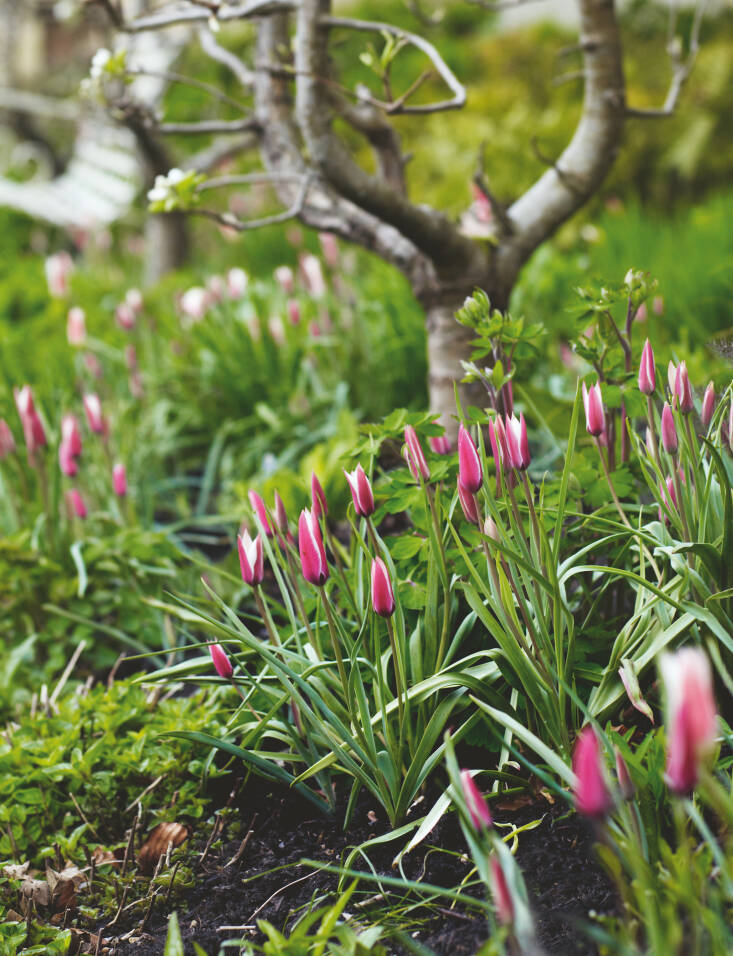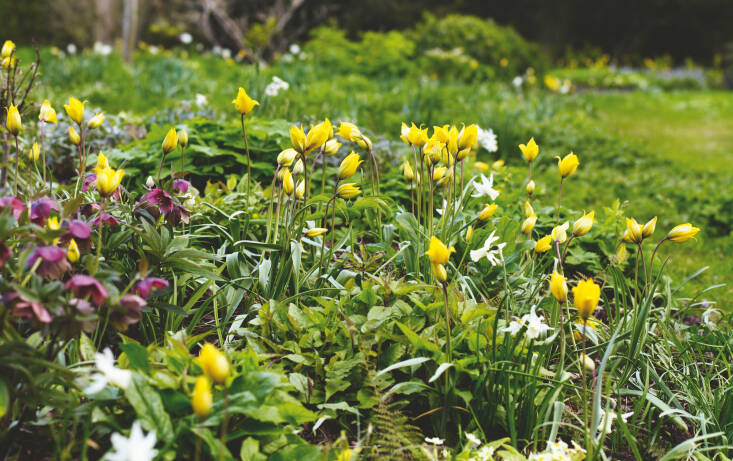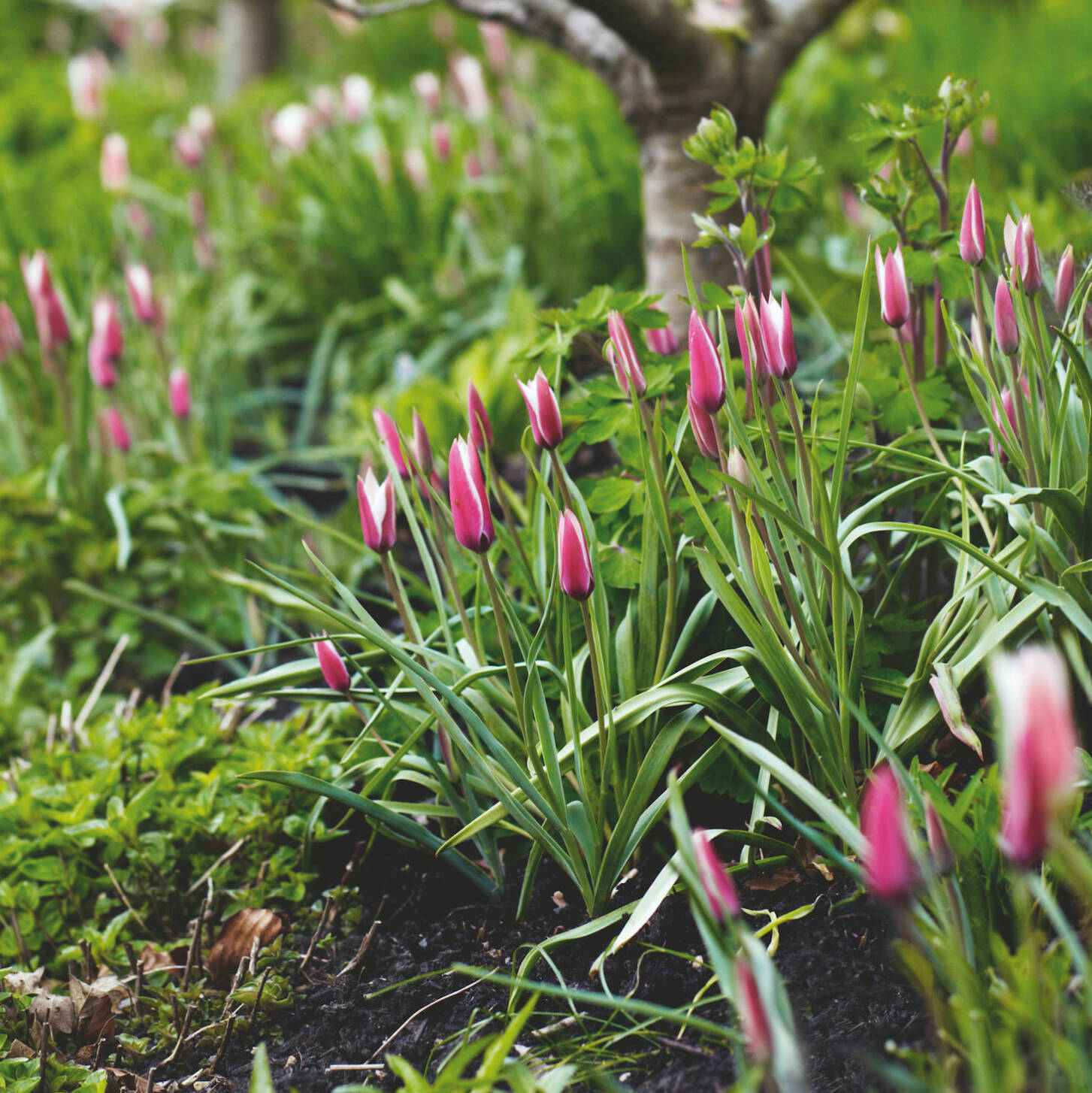Polly Nicholson on How to Grow Native Species
It is the straight species, though, that hold the most promise. “In my opinion, species tulips are the future, and an exciting one,” says Polly. They can be naturalized in grass or gravel, taken indoors in small pots, or placed in a tulipière (this one above is made by Katrin Moye). Species tulips are the past as well: “also known as wild or botanical tulips [they] are the forerunners of all tulips grown in gardens today.”
The tulips that we mainly think of as classic are a bit like standard King Alfred daffodils or Pink Lady apples; the mainstream selection is narrow in comparison to the huge variety of species and historic cultivars. This book will persuade you that these are worth seeking out, and there is not much detective work to be done, if you consult Polly’s lists toward the back.

Successful, multiplying colonies of species tulips in a garden are the result of trial and error, while attempting to replicate their original conditions. Sometimes they need to be moved around before they find the right home. Tulipa clusiana is recommended for beginners. T. clusiana ‘Peppermintstick’ grows at the front of a border in Polly’s walled garden; its looks are a mix of diffidence and artifice that annual tulips cannot match. “It has obviously been introduced, but it looks completely natural and at home.”

In gardens, Tulipa sylvestris is best placed among spring herbage and flowers that are not also bright yellow, so that its shape and subtle coloring, with brown-green stems and sepals, can be seen at their best. It’s shown here with Narcissus ‘Thalia’ and dark hellebores in woodland beds. Rough ground is more accommodating than a flower bed, though, as they spread through underground stolons. With a similar profile and intensity of color, Tulipa sprengeri is a throbbing, warm red species flower that may find itself radiating alone, or mainly against green. Polly grows them with irises.






